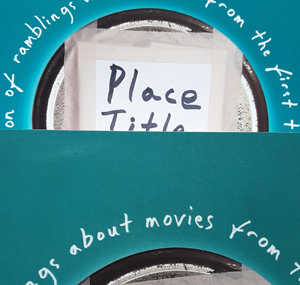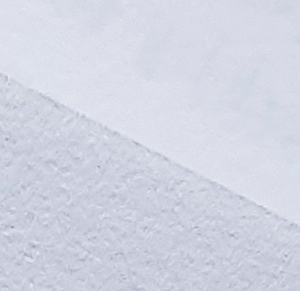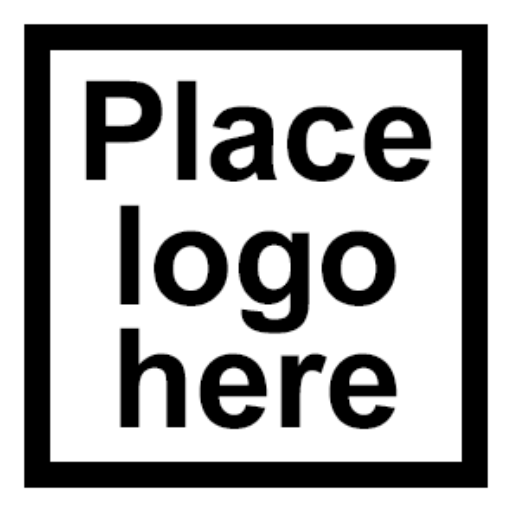On-demand publishing options of the past few years have made it more feasible for idiots like me to engage in vanity publishing, and I wanted to share my experiences with others who might be interested in doing the same.
First, this is the software I started with:
- MS Word
- Photoshop Elements
As part of my work on the cover, I also obtained Inkscape, which is open-source vector design software for Windows that I found easy to work with, given my experience using Adobe Illustrator in the past.
In the end, these will be the services I went with for these versions of my book. There will be comments about each of these later:
- E-book for Kindle: Amazon’s Kindle Direct Publishing (KDP)
- E-book for all outlets besides Amazon: Draft2Digital
- Print book specifically for Amazon: Amazon’s Kindle Direct Publishing
- Print book for all outlets besides* Amazon: Ingram Spark (*though we don’t have to worry whether the same version of the print title will be carried by Amazon–it’s complicated, and I will get into it shortly).
I highly recommend that you first do the print and e-book versions with Amazon. Though it wasn’t my own experience, I heard too many tales of woe from people who went with other services first and then their book was declined by Amazon because it appeared to be an item available elsewhere. Apparently, this doesn’t generally happen when Amazon gets firsties.
Something we need to get out of the way, and keep this mind through this entire process: get your own damn ISBNs. These are those long strings of numbers you see on the copyright pages of books, and each identifies a title/format combination. So, I have separate ones for my ebook versus my print version. I made the mistake of accepting the free ISBN from Amazon for my ebook there, and you can’t use that free one for any of your book’s formats on any other service.
There are probably different organizations through which one can acquire ISBNs, but they will inevitably just be a reseller for Bowker, so you might as well go directly to the source and cut out the middleman. They will also try to sell you barcodes, but you don’t need to worry about that. Amazon and Ingram Spark will provide that for the print versions, even with your own barcode.
In the end, I have three ISBNs: Amazon’s free one for my Kindle ebook, one paid ISBN for the ebook through Direct2Digital and another paid ISBN for my print versions on Amazon and through IngramSpark. It is telling how Amazon is very concerned about ISBN reuse for e-books and far less so when it happens for print versions. Still, best to not tempt fate. When all is said and done, I wish I had paid for all my ISBNs.
There are other gotchas with Amazon KDP and those are:
- Kindle Select
- Expanded Distribution
Kindle Select is their program where books go on sale, get promotions, are included in Kindle Unlimited, and all that. Definitely beneficial services and, if you don’t mind being exclusively on Amazon, then have at it. But if you want your e-book to be anywhere else, you do not want to be part of that. Kindle Select = Amazon exclusivity.
For print books, the expanded distribution can be problematic. At first, it sounds like a good idea to be part of that, as other bookstores and libraries can obtain your book through that. That said, other retailers aren’t going to buy your book from Amazon. That’s for a few reasons, chief among them:
- Amazon won’t accept returns from them
- Retailers, in general, already use Ingram’s distribution service
Basically, you need to also have your print book available through IngramSpark, most likely even for it to be carried by the smallest bookstore in your neck of the woods. Funny thing is, you can use the same ISBN (so long as it wasn’t a free one from Amazon) for both the Spark and Amazon print versions. And Ingram even distributes through Amazon, which I was worried would be a conflict. I haven’t had that happen yet, but many discussions on the KDP forum came to the same conclusion: the versions will basically “fold” together into one listing on Amazon. Once again, the company pretty much gives a bookworm’s ass about the physical versions.
So, why not just use IngramSpark for the printed edition? For that matter, why not use them for both the print and ebook versions, since they do both? Oof…here goes:
- Amazon is pretty much bigger than the other retailers combined, so you’ll want to focus on them primarily. But you also don’t want them to be your exclusive distributor, hence the variety of services I use.
- The IngramSpark interface is legendarily bad, and that is, of all the steps in the process, what I most hope will change someday.
- For e-books, IngramSpark (at this time) indiscriminately makes the title available to all markets, and that includes Amazon. Remember what I said about Amazon not caring so much about the print books? That’s because e-books are where the real money is now, and you don’t want to tempt fate by having a book identical to the one on Amazon suddenly show up from somewhere else. Those competing versions apparently won’t have their listings “folded” together like the print ones. Instead, your ass will be folded and handed back to you. There are accounts of this happening even when using your own ISBN. But, like I said, this wasn’t my experience. Regardless, I think it is wise to play it safe.
The main concern in the process of making a book should be the text and how it will appear. That isn’t such a big deal for the e-book version, and most devices on which it will be read have options to change the formatting. But the print version is a whole different animal, and I recommend starting with Amazon’s guides for allowable dimensions for your book, so that content does not go outside the bleed area. I will not cover the concepts of bleed or trim here, but you need to research those if you’re not already familiar with them.
Once I had the margins mandated by Amazon, I formatted my book in this manner in Word:
- alternating headers to put the page numbers on the outside of each page
- a table of contents
- an index
There was something else I had in my headers, and that was the title of the essay on that particular page. I put this opposite the page number in the header, to make it easier to find a particular piece when flipping through the book. I did this by a type reference, as the title of each essay was of the type “Header 2”. This is one of the first things I set up in my book. You need to keep in mind how reference data such as this is the most likely thing to be corrupted as you move content around, so you should double-check each page before sending a file to print, to ensure you don’t have a random string of letters and numbers in the header where intelligent text should appear.
The format uploaded to either Amazon or IngramSpark for the print edition will be PDF. The latter company is very particular about the file format, and you’ll find yourself looking into how to embed fonts when saving, and to a very specific flavor of PDF.
Once you have your content in the formatted Word doc in the manner you want the final product to appear, I highly recommend making any additional changes to the text in that document. What is nice about a table of contents in Word is you can choose to only update the page numbers. I wish the same applied to the index. Still, I would wait to do those parts last; otherwise, you run the risk of the final product having the wrong page numbers in those sections.
But headers and indexes only apply to the print version. You aren’t going to have these in your e-book. But you likely will have a table of contents, and that will be dynamic links instead of page numbers.
We are ready to create the Kindle version once you are done making changes to the print version in Word. Trust me, you will want to have all your edits finalized in Word first, as Kindle Create, the tool Amazon produces to create this version, is not a robust editor. This utility will output a version for Kindle, but can also produce epub documents for use through services such as Draft2Digital.
So, why use Draft2Digital at all? I used them instead of IngramSpark because of the issue I mentioned before where Ingram does not allow you to exclude certain markets–that being Amazon. D2D allows you to select only certain markets and even warns you against sending to Amazon if you have already published the title there. Also, D2D pushes to a great many retailers (including Barnes & Nobles and Apple Books) instead of you having to create an account with each one and upload your content to each. The business model is D2D takes 10% off the top for all sales. What is baffling to me is they also apparently distribute free e-books, so I guess they take 10% of the nothing collected there.
Now, something you should have been concerned about even before considering publishing your book is editing. I don’t have any advice here, as I tried and failed to find any reputable editors at a price I found palatable. Really, my editing process was going back to the book repeatedly and asking myself if there was anything I wouldn’t want in the book if I had bought it. I must have read the text through completely at least a dozen times. Not having an independent editor, I found time was its own kind of proofreader. It is strange how my perspective would change drastically across the months I worked on finalizing the text. Also, I discovered different errors when reading in different formats, so I highly recommend comprehensively reading your work in an e-book format and again when you order printers proofs of the print edition. And you definitely want to do printers proofs of those.
With that, this is a good time to bring up the topic of your cover. I did my own and thought creating it in Photoshop Elements (with some vector art done in Inkscape) would suffice. At least it did for Amazon, and I have to give them props for that. Where things get tricky is, again, IngramSpark. Not only should you request a template from them but, after you save your artwork in that template, it will need to be converted to CMYK. To my considerable chagrin, Photoshop Elements does not save artwork in that color profile (everything in it is RGB). Unless you buy Adobe Acrobat (or other third-party software), IngramSpark won’t load your file.
There is a workaround. Although I suspect this service won’t be available at some point in the future, Heather Cash was a lifesaver with her online utility which successfully converted my cover to CMYK. I made sure to throw some money her way afterwards and, if it also works for you, be sure to do the same.
Now, there were some surprises when I received my proofs from Amazon and IngramSpark. The former produced a thicker book and with a cover that was exactly like the artwork I sent to Amazon. The latter produced a thinner (and taller?!) book and the colors skewed more towards sea-foam green than my intended teal. I was stunned by both aspects, not the least of which is both supposedly use the same weight paper, though obviously of different thicknesses.



And, with that, I want to circle back to the cover again. First, you’ll need to keep in mind the trim and bleed areas as much as (even more than?) the interior text area. Second, don’t worry about putting in a barcode, and don’t bother buying one from Bowker when you buy your ISBNs. Both Amazon and IngramSpark will integrate one into your cover art, with a designated area in the template to leave blank for it. Lastly, I would not put the price on the cover, as that will make it more difficult to change going forwards, and I’m not seeing prices go down on anything lately.
One aspect of pricing to keep in mind with either service is your profit. I make barely a dollar on each copy sold of the print version and that it is even pricing it a bit higher than I think I would pay for a copy if it was an equivocal book by somebody else. With Amazon, you don’t have to worry about returns, but you will with IngramSpark. You can choose to either have returned copies sent to you (which means you pay the cost of both the printing and the shipping) or have them destroyed (and you’ll still pay the printing cost). I opted for send to me in the US and destroy copies from outside the country.
And there’s yet another consideration with IngramSpark regarding pricing. You have to choose a wholesalers’ discount, that being the amount different from list that a reseller can pay for your book. From what I have read, you’re unlikely to sell any copies unless you go with the biggest discount (currently 55%). However, if I did that, I would be paying them for each copy sold unless I raised the price of the book nearly two dollars. That isn’t going to happen, so I selected 50% and am hoping for the best.
At a high-level, these are my recommendations from my own experience so far:
- Buy at least two ISBNs: one for e-book and one for print (and, if you have different print formats, such as paperback and hardcover, you’ll need separate ones for each of those as well). If publishing e-book through Amazon and also anywhere else, but yet another ISBN, so one will be the Amazon version and the other the outside-of-Amazon version.
- Do not use free ISBNs. I cannot emphasize this enough.
- Publish Amazon’s e-book from KDP
- do not enroll in Kindle Select
- do not use Expanded Distribution
- Publish the e-book for everybody else through Draft2Digital
- but do not allow them to send to Amazon
- Publish the print book through both Amazon and Ingram Spark
- Using Amazon’s print specifications for the interior, set your margins and headers/footers in Word first, then use this document as your “master” for all future changes
- Only create a table of contents and index after all edits to the text are finished
- Proofread your book in as many formats and contexts as possible. Beg, bribe or threaten others to help edit. After all, you wrote the damn thing, so whatever mistakes you made writing it are probably the same ones you’re going to make when reading it.
- Keep in mind trim and bleed areas, especially as concerns your cover.
- Price your book however makes the most sense for you, but is reasonable for your intended audience.
My last words on the subject concern when to walk away from the project, whether you decide to bail or to release the text to be printed. You should only publish if and when you are fully ready to potentially never be able to make additional changes to the text. That tolerance for errors will vary from person to person, but it is important to keep in mind every book has at least one error in it. It is likely some fundamental law of the universe. Similar to so many other things in life (including, I suspect, the end of it), there comes a time when one has to simply let go, and you will know that moment when it happens. But that must be balanced against a likely desire to just get it over with and rush to completion. Do not jump the gun and either publish something you suspect you’ll later regret or kill your project out of frustration. I’ve done both in the past with other projects and regretted both decisions. But when I finally held a finished copy of my book in my hands, I had something that was the first time I was ever proud to have engaged in an artistic endeavor.
